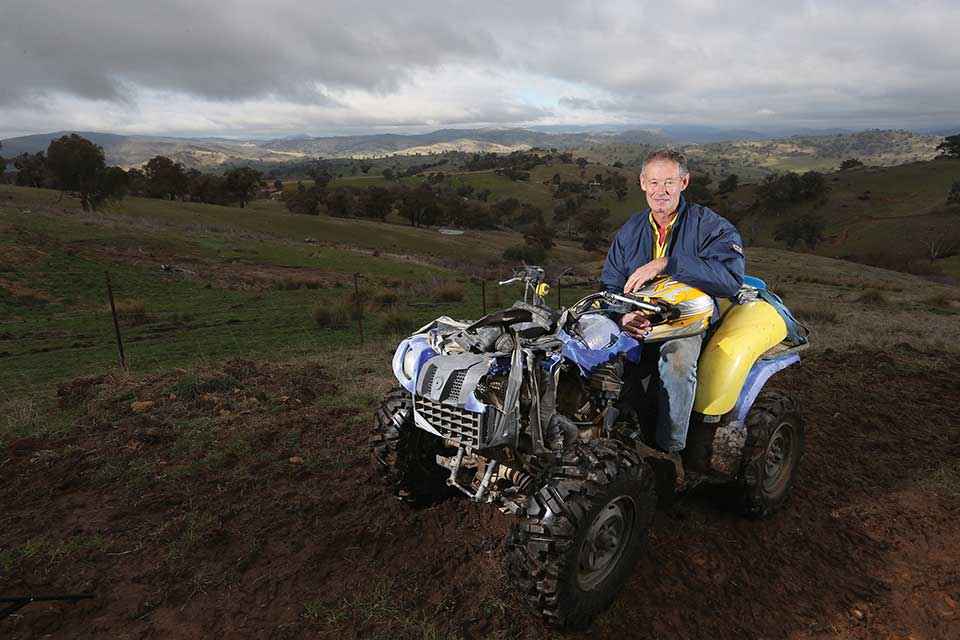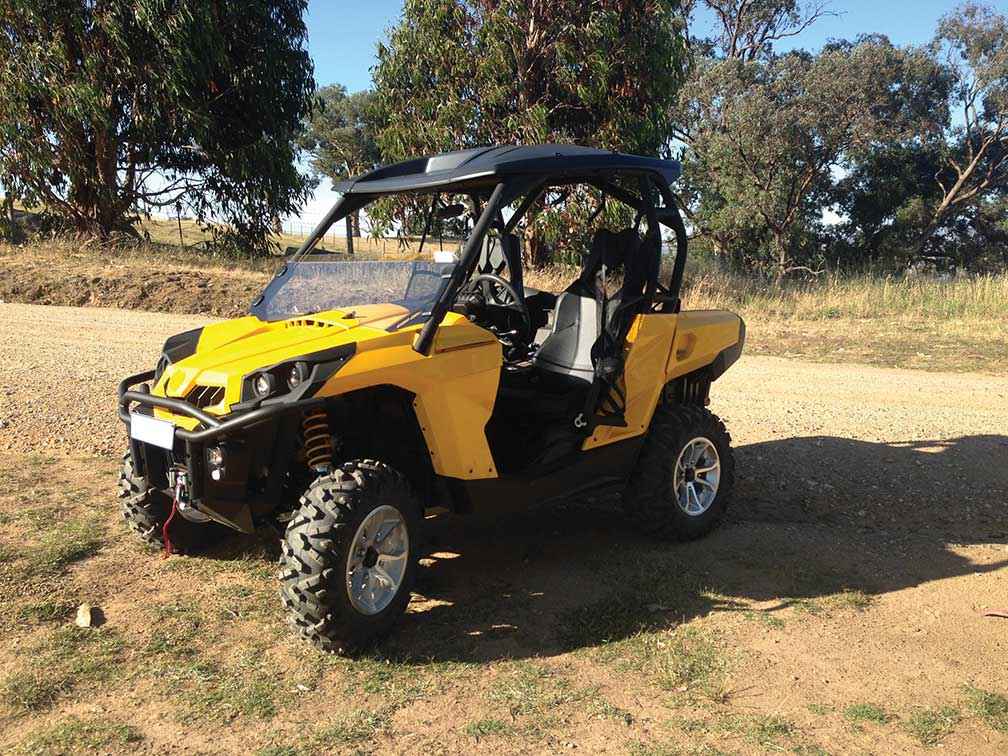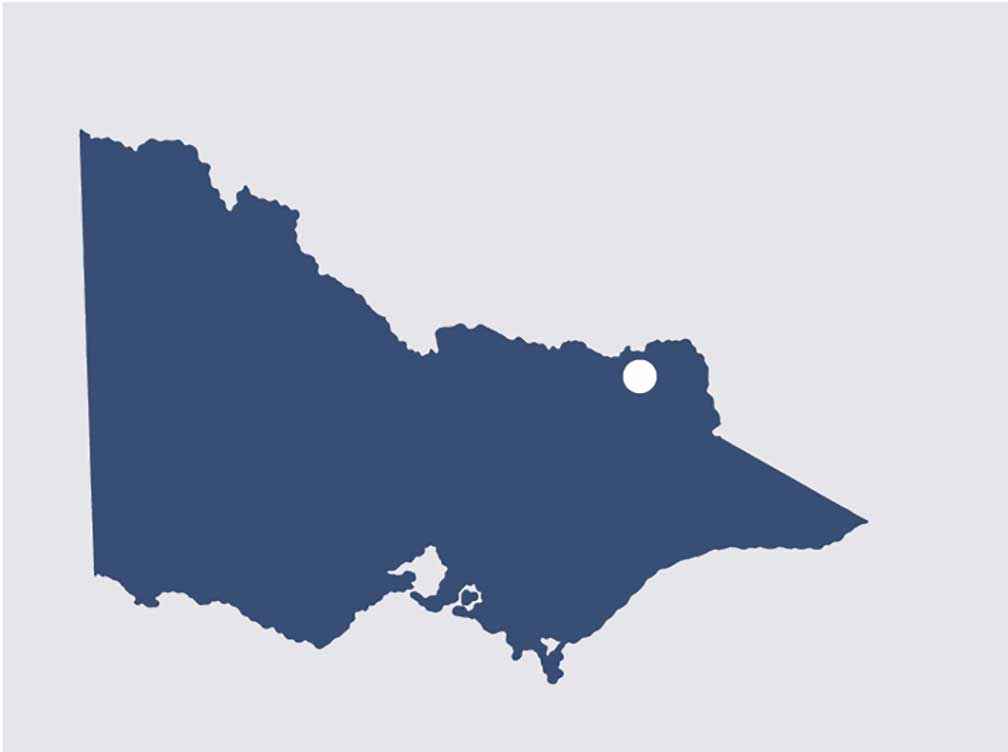Victorian Landcare Magazine - Winter 2019, Issue 75

Half of all Victorian workplace deaths in 2017-2018 occurred on farms.
However, farms employ just three percent of working Victorians. The agricultural industry is a priority sector for WorkSafe with our vision of all Victorian workers returning home safe every day.
Quad bike incidents are a leading cause of deaths and serious injuries on Australian farms.
In 2013 David Elder of Bethanga discovered that no two rides on a quad are the same. It was a regular day for the community-minded farmer. He’d had ambulance duty the night before and was going to see his neighbour after spraying some blackberries. It was dark, the driveway was steep and he was tired, but he knew the terrain.
Suddenly David was on the ground. He wasn’t found for several hours until a woman and her child saw him on their way back from basketball. It was a miracle he survived. He had extensive injuries including a fractured skull, jaw, shoulder, collarbone, ribs, and bleeding on the brain.
What followed was a farmer’s worst nightmare. Five days in an induced coma, three months stuck in a Melbourne hospital and many more months of rehabilitation. David couldn’t do anything on the farm – although he tried – and couldn’t even drive a car to pick up groceries for 12 months.
David grew up on a farm in Benalla, worked as a jackaroo in WA and established a steel fabrication business before buying his farm in Bethanga. He’s involved in the local Bethanga Landcare Group, volunteers for Ambulance Victoria and sits on another half a dozen committees that assist the community. His farm is typical of the land around Bethanga and many other parts of Victoria with a combination of rolling hills and pasture.
David was an experienced quad bike rider. He wasn’t going fast at the time of the accident, but he wasn’t wearing a helmet and had a tank on the back from spraying.
It’s now six years since the accident and David is still recovering. He’s back on the farm but struggles with balance issues and short-term memory loss. He’s also aware of how his injury impacted others, particularly his family and the neighbours who found him.
David remains positive. He continues to pursue his Landcare and community work, and advocates strongly for farm safety.
“I learnt the wrong way and I want to change the culture of people taking shortcuts. It’s not just people hooning around who have accidents; it’s farmers moving around in the field by themselves and thinking about other things,” David said.
David reviewed the best options for his farm work after the accident and now uses a side-by-side vehicle with a rollover protection system and seatbelt, along with his ute.

Above: David Elder’s side-by-side vehicle – a safer option for farm work.
WorkSafe Victoria has produced an online reference guide for quad bike safety. There is more information on all of the topics below at www.worksafe.vic.gov.au/quadbikes
Choose the right vehicle for the task. Is a quad bike the most suitable vehicle for the task on your farm? In some cases a ute, tractor or side-by-side vehicle might be a better option.
Understand the hazards relating to task and terrain. What you’re using the quad bike for, and where you’re using it, can significantly impact your safety.
Always wear a helmet. A common complaint from farmers is that helmets are too hot, too heavy or they cannot hear when wearing them. There are options available that don’t cover the ears and, in situations where quad bikes don’t go over 30 kilometres per hour and operate only on the farm, there are lightweight options available with brims and flaps to protect the neck.
Do a pre-start check. Pre-start checks can prevent factors that contribute to accidents. Some key things to check include tyre pressure, steering and brakes.
Understand the impact of loads and towing. The size, weight and distribution of yourself, and what you carry on the quad bike pack rack, can affect your steering and centre of gravity. Ensure you’re aware of the manufacturer’s limits (check the decal on the quad bike) and account for the rider and load weight, including any towed loads.
Training, information and instruction. Everyone who uses a quad bike should understand the associated hazards and how to operate it for the task and terrain on your farm. Consider sending workers to a quad bike course with a registered training organisation. If a worker is an experienced rider, ask someone who understands quad bike operation to assess their skills and/or supervise them until you’re confident they can complete the required tasks in the terrain.

Above: Bethanga